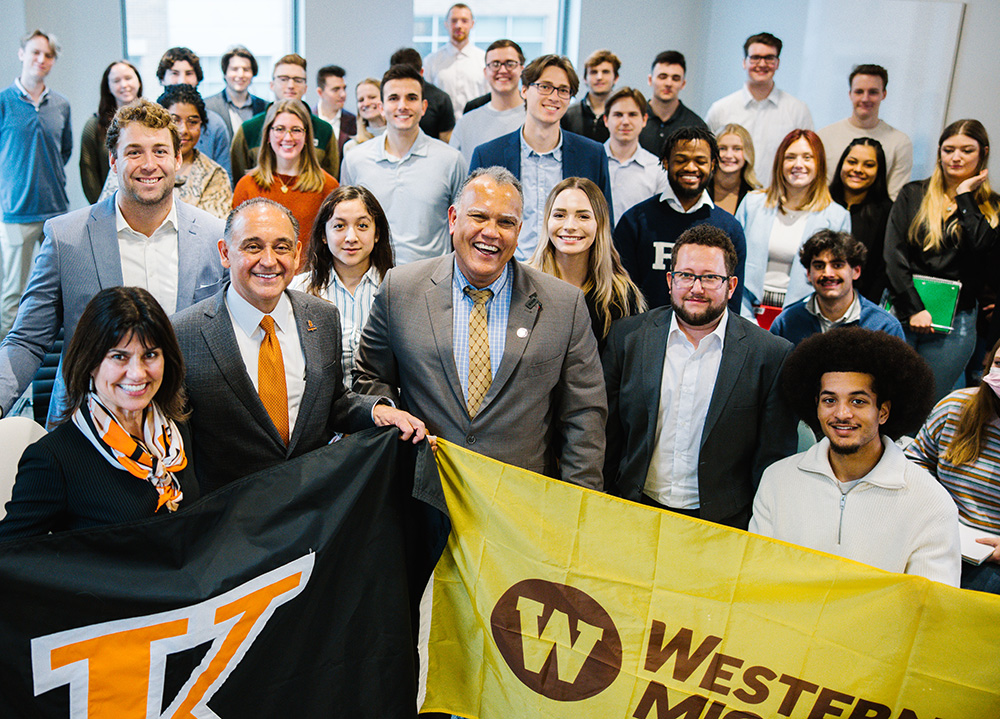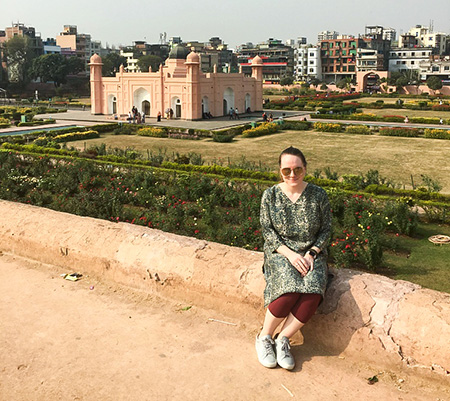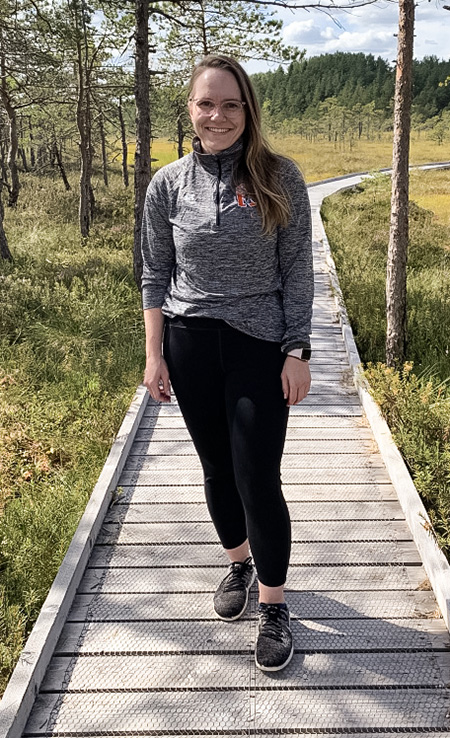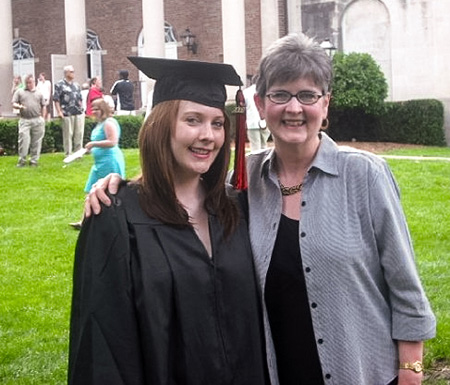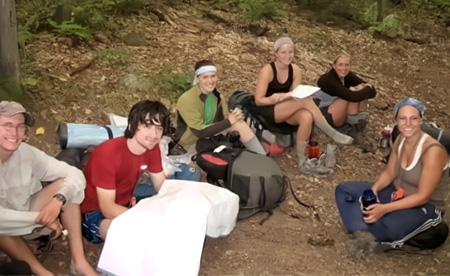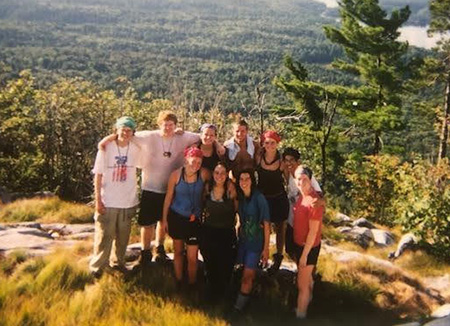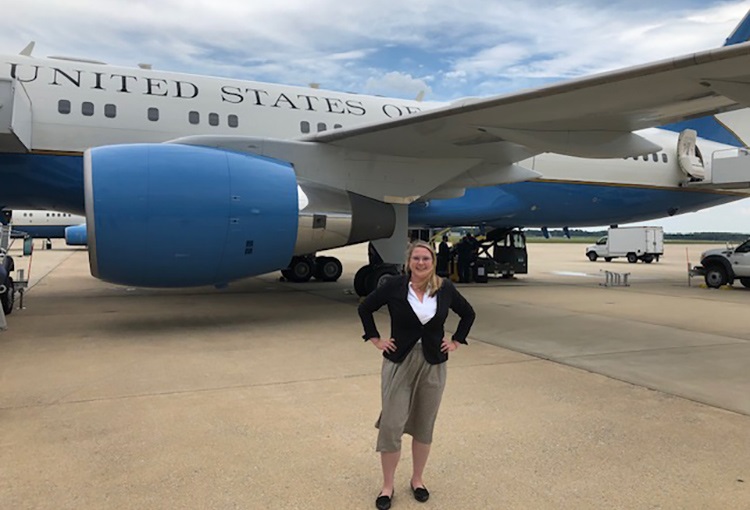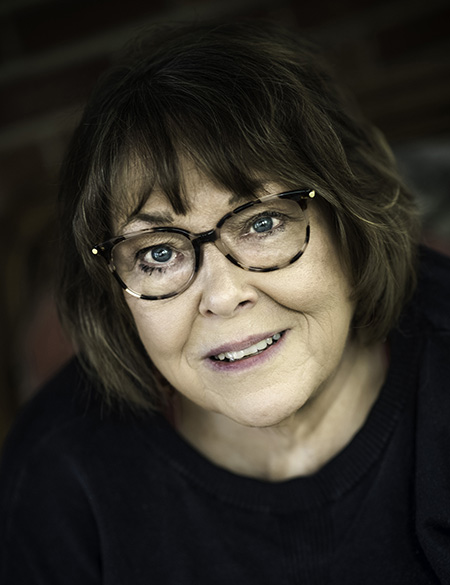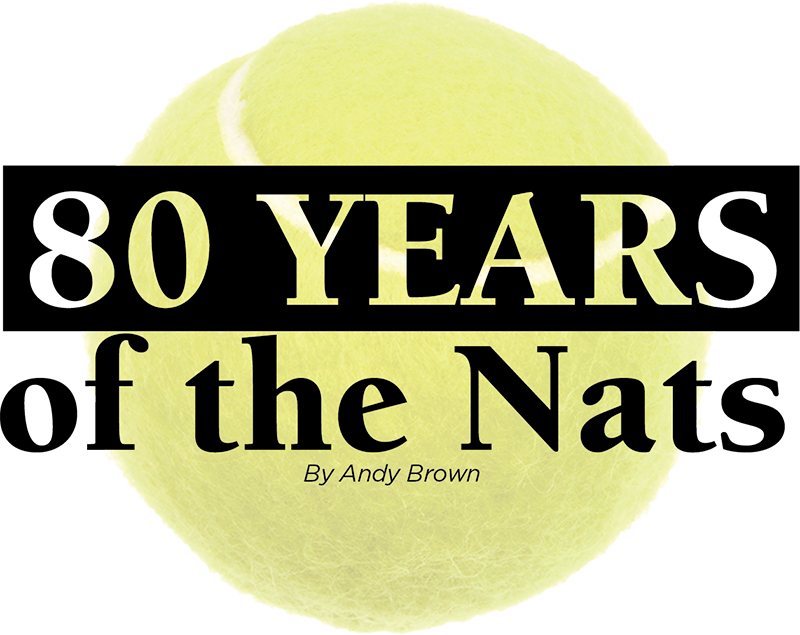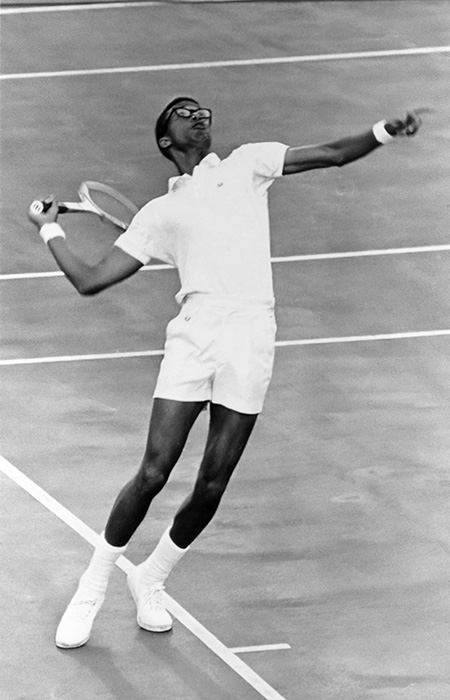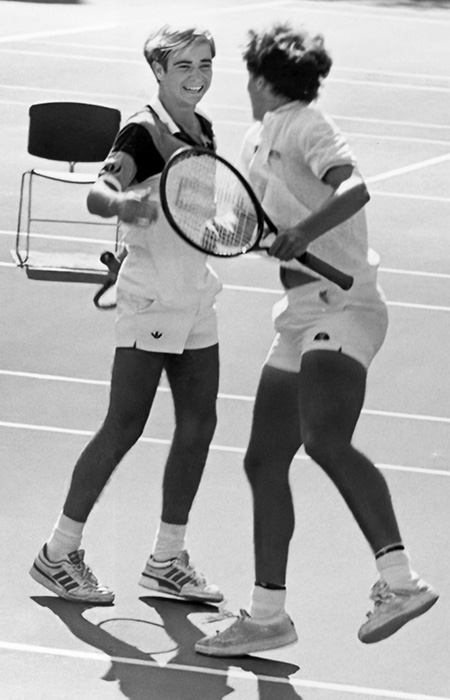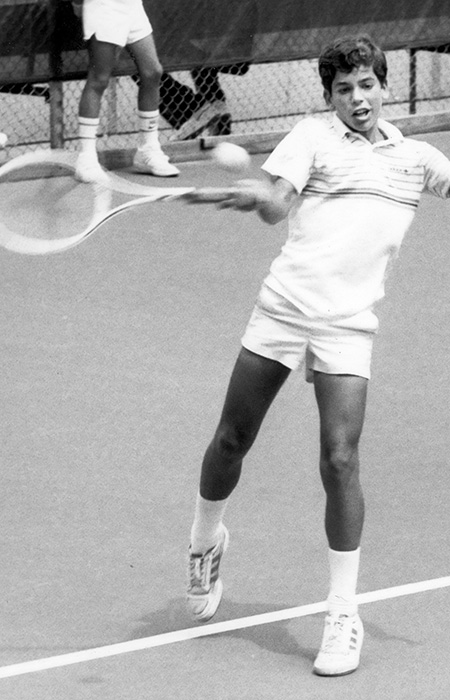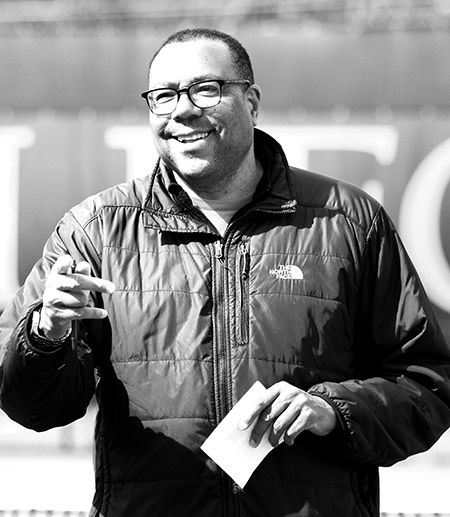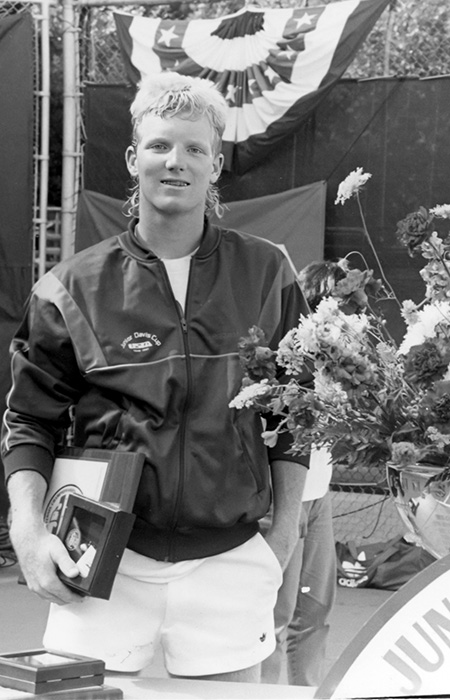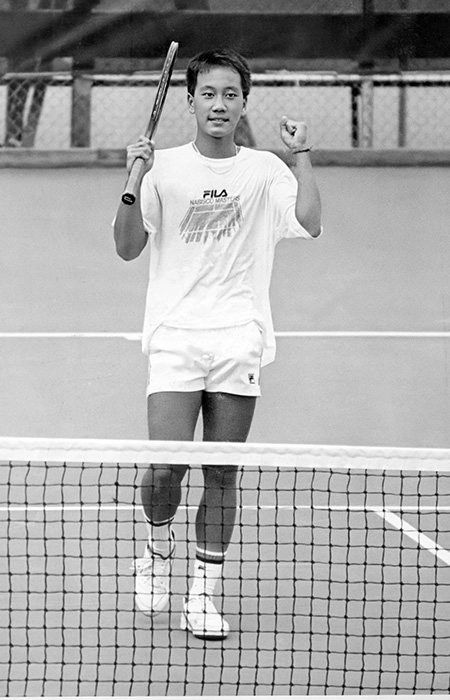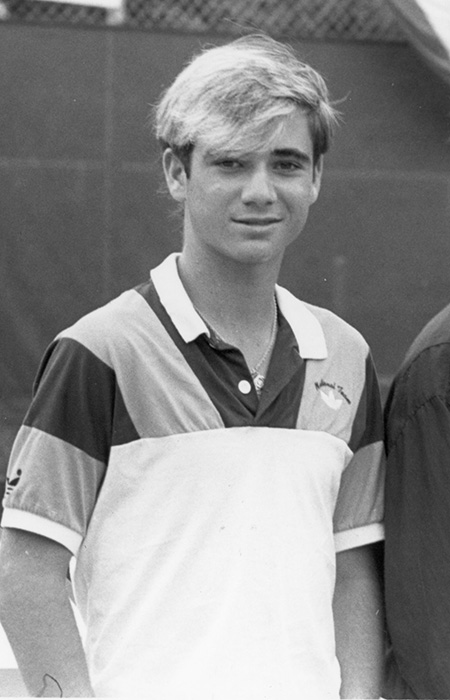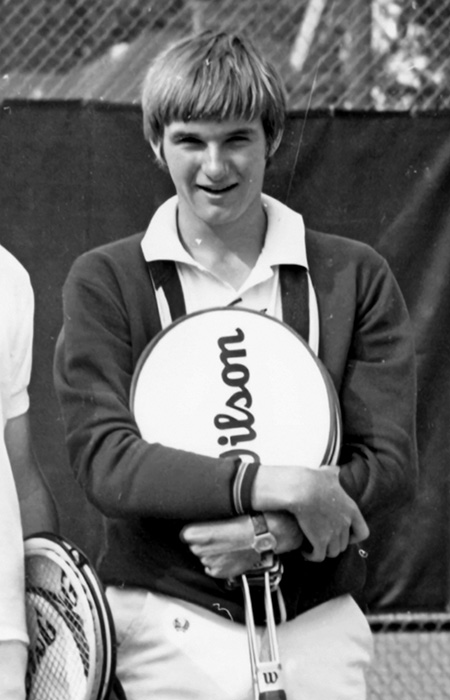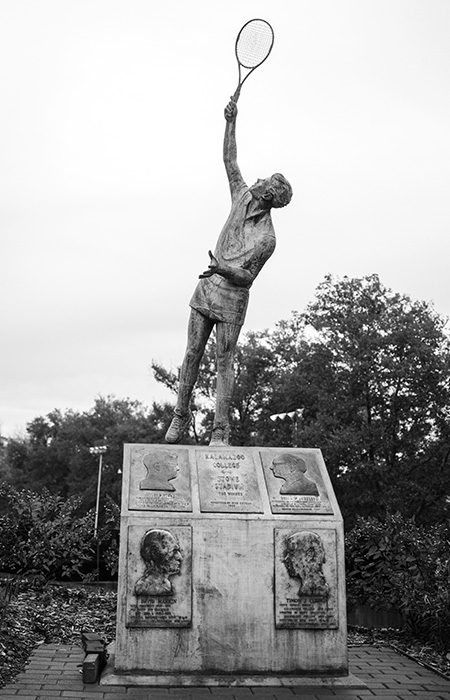
The office building where Sleeping Giant Capital resides sits on the corner of South and Rose streets in downtown Kalamazoo, dressed in limestone, granite, and brick, with an impressive glass atrium. The building represents the kind of investment folks have been making in the city of Kalamazoo, as its downtown teems with new businesses, restaurants and residential units.
What you’ll find inside the walls of Sleeping Giant is an example of what makes Kalamazoo—home to the Kalamazoo Promise, multiple colleges and universities, and a wide variety of companies—worthy of such investment: an innovative educational collaboration that offers Kalamazoo College and Western Michigan University students a new way to gain practical business experience in a fast-paced, real-world setting.
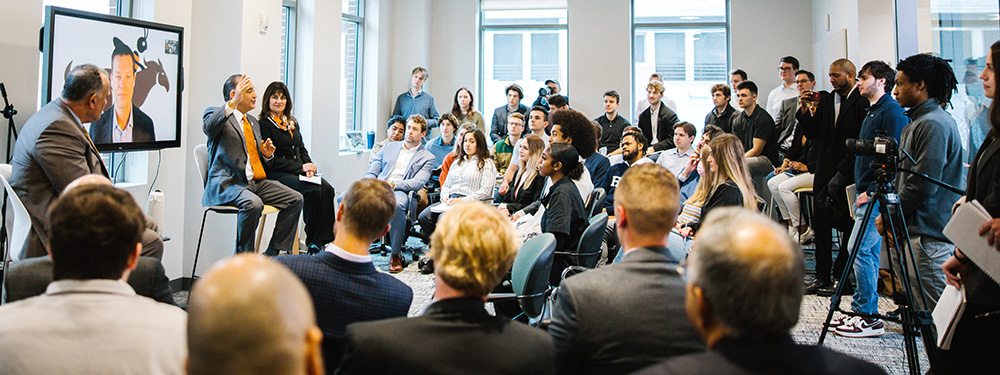
On a February afternoon, the offices of Sleeping Giant Capital are buzzing with excitement. At the front of the room sit two special guests: Kalamazoo College President Jorge G. Gonzalez and Western Michigan University President Edward Montgomery. They are here to talk with students about this new experiential learning practicum offered through WMU’s Center for Principled Leadership and Business Strategy and K’s Department of Economics and Business. Surrounding them are the 40-some students of the practicum, its faculty, and a host of community and educational leaders.
On the Kalamazoo College side of the partnership, L. Lee Stryker Associate Professor of Business Management Amy MacMillan integrates elements from a strategic marketing management course she co-teaches at K. From Western, Leadership and Business Strategy Co-Directors Derrick McIver and Doug Lepisto ’04 tap into a Leadership and Business Strategy (LBS) course they co-teach at the WMU Haworth College of Business. Lepisto and McIver are also the co-founders of Sleeping Giant Capital, an investment firm that has raised $62 million to date focused on empowering local professionals to acquire, operate and grow West Michigan businesses. When combined, these elements create an immersive experience that goes outside the classroom and operates like a real-life consulting firm.
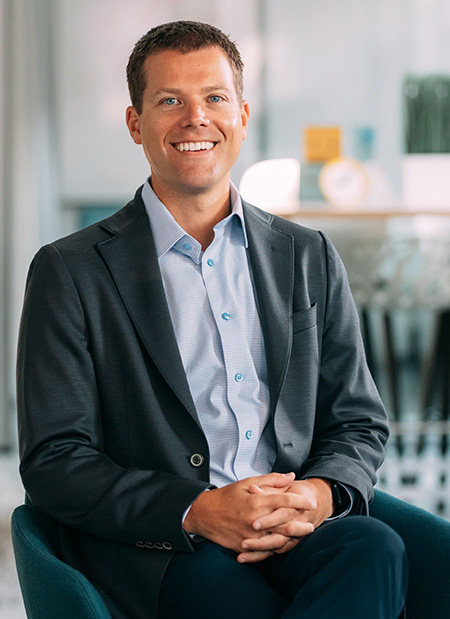
Lepisto ’04. “Bringing those pieces together is a ton of fun and truly rewarding.”
The collaboration between K and WMU, Lepisto explained, began with an email from Kalamazoo College Trustee Jim Heath ’78, a former Stryker executive and current people coach and business consultant. He was familiar with the work Lepisto and McIver were doing at WMU, as well as with the experiential learning opportunities MacMillan and Associate Professor of Economics and Business Tim Moffit were providing at K. Heath connected Lepisto and MacMillan, and they met in the spring of 2022.
MacMillan said, “We realized immediately that we shared this common vision. We wanted to create immersive experiences for our students that stretched them outside their comfort zones and positioned them where they can thrive and succeed as leaders in the real world. So, wouldn’t it be cool if we could take our mutual programs to the next level by collaborating and joining forces, and at the same time, help a Kalamazoo-area business? It just felt really good.”
The effort was not without challenges. The two institutions were on different schedules—WMU on a semester system, K on a quarter system—but with support from administration, they were able to craft an 8-week accelerated program where students would sit on six- to eight-person teams and offer consulting services to a West Michigan-based company.
The client that term was AVB, a leading regional construction and development firm. Teams were given a problem statement that included budgetary, geographic and time constraints, and tasked with creating individualized marketing strategies that would help the company enter new market segments. The work included performing research with stakeholders within the markets to gather key insights and presenting their strategies, including the financial impact of their recommendations, to AVB at the end of the project. Set up as a competition, the practicum included AVB offering a $5,000 prize to the winning project team.
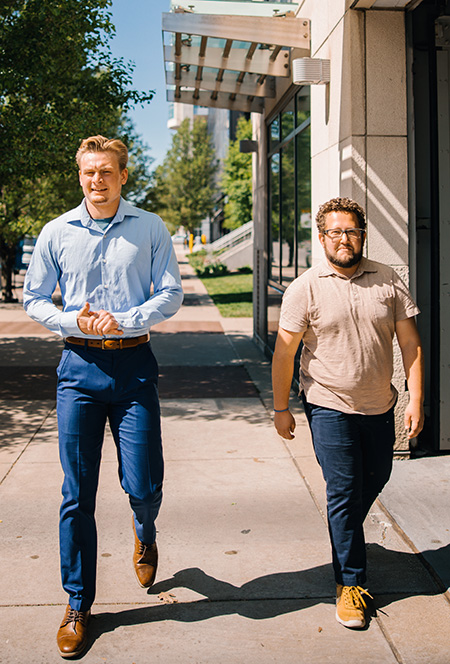
After the event, Pieter Slager ’23, a business major, explained how the teams worked: “There are analysts within the group, which is the role I was in, and those were primarily students taking the course for the first time. We were led by two team leads, who were taking this course at Western for the second time. As an analyst, some of my daily work included primary and secondary research, making presentation slides or different business memos, evaluating data, and then analyzing our client’s business practices, as well as competitors’, to see where the business might be falling behind or maybe performing better than competitors.”
Along the way, students developed critical business competencies like strategic thinking, communication, and building collaborative relationships, as well as learning practical skills, such as building pitch decks and issue trees, financial modeling and how to deliver effective presentations to a client. All classes were held at the offices of Sleeping Giant Capital and students were expected to attend dressed in business casual or professional attire.
Business major Greta Wedge ’23 said, “When we first got there, the professors from Western very much set the tone that this is serious, there is a dress code, and it’s going to be a quick pace.”
For the K students, the brisk timeline was a challenge, but not an unfamiliar one.
Ryan Hanifan ’23, a business major, said, “At K, we aren’t strangers to dynamic and fast-paced projects. We often work collaboratively within smaller groups, learning in trimester-long time frames. Our school is accustomed to high performance expectations, and we thrive on healthy competition.”
Slager said that the opportunity to immerse himself in an environment that was not typical for academia was a highlight. “We were going to this private equity firm downtown. Morgan Stanley had an office across the hall. So, it’s a class, but nothing about it is like a class, and you’re gaining real world experience. You’re in a private equity firm for multiple hours a week, and we were able to meet some impressive professionals from the West Michigan area and across the country.”
Wedge said, “It was really interesting to go there and have that experience consulting with a real company…They came in and talked to us, we were able to ask them questions, we had opportunities for interviews with them—as well as with other professionals in their industry and in the education industry. So it was, overall, a robust program and a great experience, especially as a young professional. It gave me a wide range of experiences that I think will be applicable to life after K.”
Hanifan appreciated the diversity of thought that came with blending students from the two higher ed institutions.
“One of the neat aspects of our collaboration was the diverse range of perspectives and experiences that were brought together. At K, as a business major in a liberal arts college, we engage in a broad spectrum of courses. This pairing with Western allowed us to witness the unique blend of specialized expertise and interdisciplinary learning. It was fascinating to see the cohesion that emerged.”
Wedge agreed adding there was a mutual benefit. “I think K teaches us how to think critically and globally and how to interpret and experience the world around us. And I think Western teaches their students a lot of concrete skills, like developing presentation decks and effective strategies for using PowerPoint to present. So, I felt like that collaboration was a great way to share information and see how other students think and see the world outside of a K perspective.”
The students also valued the diversity of thought provided by professors from two different colleges.
“It worked out really well—the diversity in personalities and perspectives from our managing partners was an advantage,” Hanifan said of MacMillan and Lepisto. “Each one brought their distinct viewpoint, and we had to carefully assess and reconcile the feedback to determine the direction we wanted to take. It enabled us to explore different angles and consider a variety of approaches, resulting in better decision-making.”
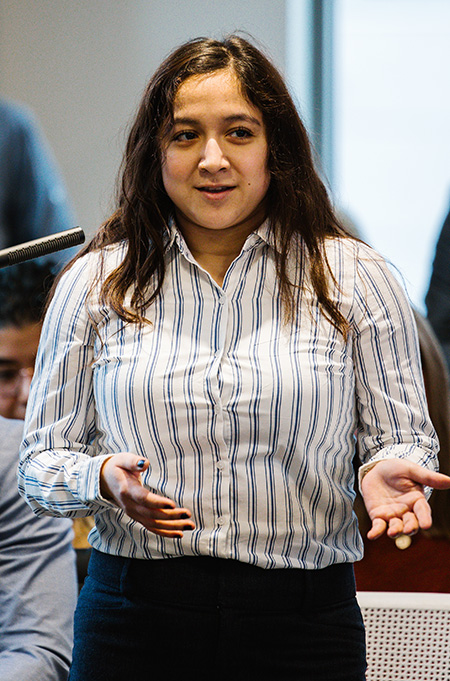
At the February event, Fatima Ortega ’23, a triple major in business, computer science and Spanish, talked to the audience about how the class helped her become more experienced in the business world and gave her practical experience as a computer scientist under the guidance of both professors and peers. “This experience taught me a lot about how professors could give you the opportunity for something, but it all depends on the students themselves creating an environment where they are working together, (helping) each other grow,” Ortega said. “Usually in a class setting, the professor is the one that gives you the experience. So, I’m glad that I have been able to work with a great team. They’ve let me grow. They’ve been very upfront about things that I need to work on and what I’m doing well.”
President Gonzalez asked what inspired Ortega, with three majors and a very full slate of classes, to sign up for this particular class.
“I have taken many classes with Professor MacMillan, and I always love her energy,” Ortega said. “I trust her fully that she’ll give us the best experience. And I’m very proud to be here.”
Emilio Romo ’23, a business major, noted at the event that “being immersed in a business environment surrounded by a group of great minds has really helped me personally to excel and refine my strengths. Here, you’re encouraged to take initiative and develop your skills to adapt to changing situations and uncomfortable situations.”
After the students spoke, MacMillan reminded the audience that the collaboration goes beyond WMU and K, noting, “This experience would not be what it is without a partner client, a company willing to share their information, their time, and their resources with the students, let us dig in and analyze the business, collect data, analyze data, and make recommendations.”
AVB Chief Operating Officer Greg Dobson attributed the company’s participation with the class in part to his own experiences as a college student and intern.
“At WMU, as a senior I was selected by the president of the university—at that point it was Dr. Diether Haenicke—to intern in his office, later becoming his executive assistant, and because of that experience, which changed the entire trajectory of my life, I realized the value of being a student and working on something at the same time. And from that moment on, I always wanted to pay that forward.
“At AVB, we’ve had a long tradition of having interns be involved in our company. So, when Amy and Doug called and said, would you want to be involved in this, I thought about all those people that have been involved in the formation of my life and in our company being so successful. The fact that we had these great professors to seek input from was inherently awesome, and then they pulled in a bunch of great consultants, and we saw, we can really learn something. Participating in this process has provided the big win-win-win: a win to K and WMU, a win to the students and a win to AVB. For all these reasons it is a pleasure and a true privilege to be here.”
President Gonzalez shared his appreciation for the partnership with WMU and for the efforts of Lepisto, McIver and MacMillan. “As a faculty member, the easiest thing to do is to stay in your classroom where you control everything that happens from minute one to minute 55,” said Gonzalez. “When you agreed to do something like this, all that is out the door, and everything is uncertain…(Here) you have some faculty members who are incredibly entrepreneurial and willing to go out of their way to do something really special.”
He went on to emphasize that “this is the future of Kalamazoo. This is the future of this country. We are creating entrepreneurs, we are creating people that are going to look at products from different perspectives.…We have civic leaders, we have business leaders, we have students, we have faculty members getting together to make a better future…I really hope this program continues to grow and expand because the opportunity that this group of students have had this term—I hope that we have hundreds of students over the years that are able to have this experience.”
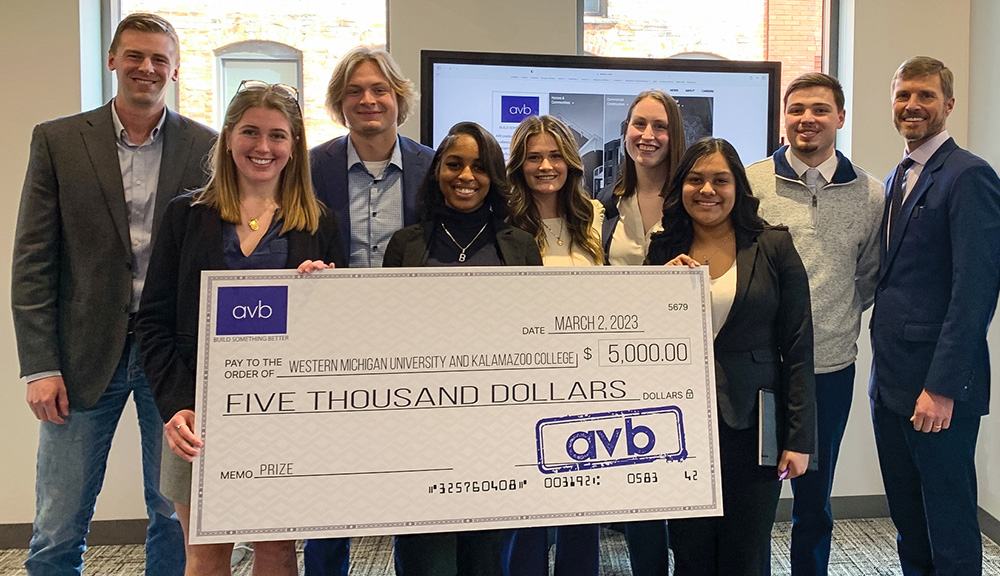
Some in attendance said that it only made sense that an innovative idea like this practicum would take root in a place like Kalamazoo. And for the students of Kalamazoo College, it was an experience they will not soon forget. Wedge and Hanifan were proud to be on the winning team that earned the $5,000 prize. Slager was so invested in his team that he continued to work with the WMU students for no additional credit after K’s term ended, even going in to work during K’s spring break (WMU’s semester ended a few weeks later).
Wedge said, “One of the biggest highlights for me is that I am more excited about my future in the corporate world. You’re always excited about the theoretical future, and this was a concrete experience where I could see myself being happy and fulfilled after college, which is reaffirming. I feel like a lot of students come out of college and it’s like, I picked this major, I did all of this work, I don’t know if I love it. Then you have an experience like this one and you’re like, yeah, this is what I should be doing. This is my passion.”
